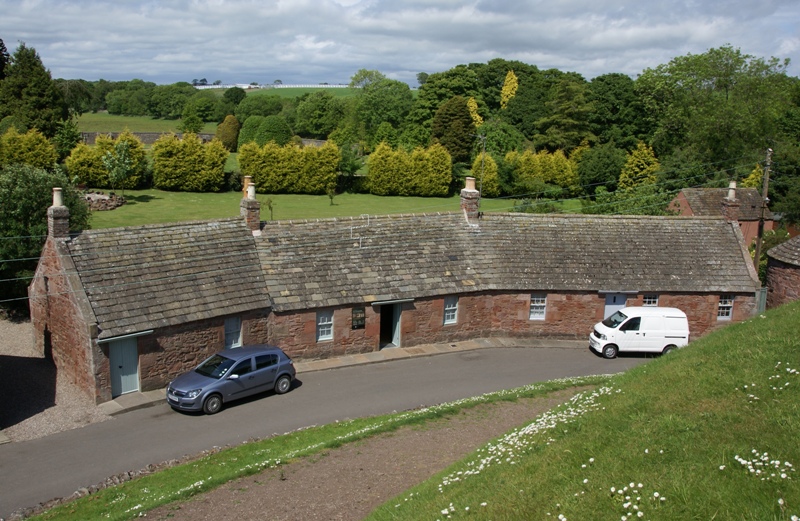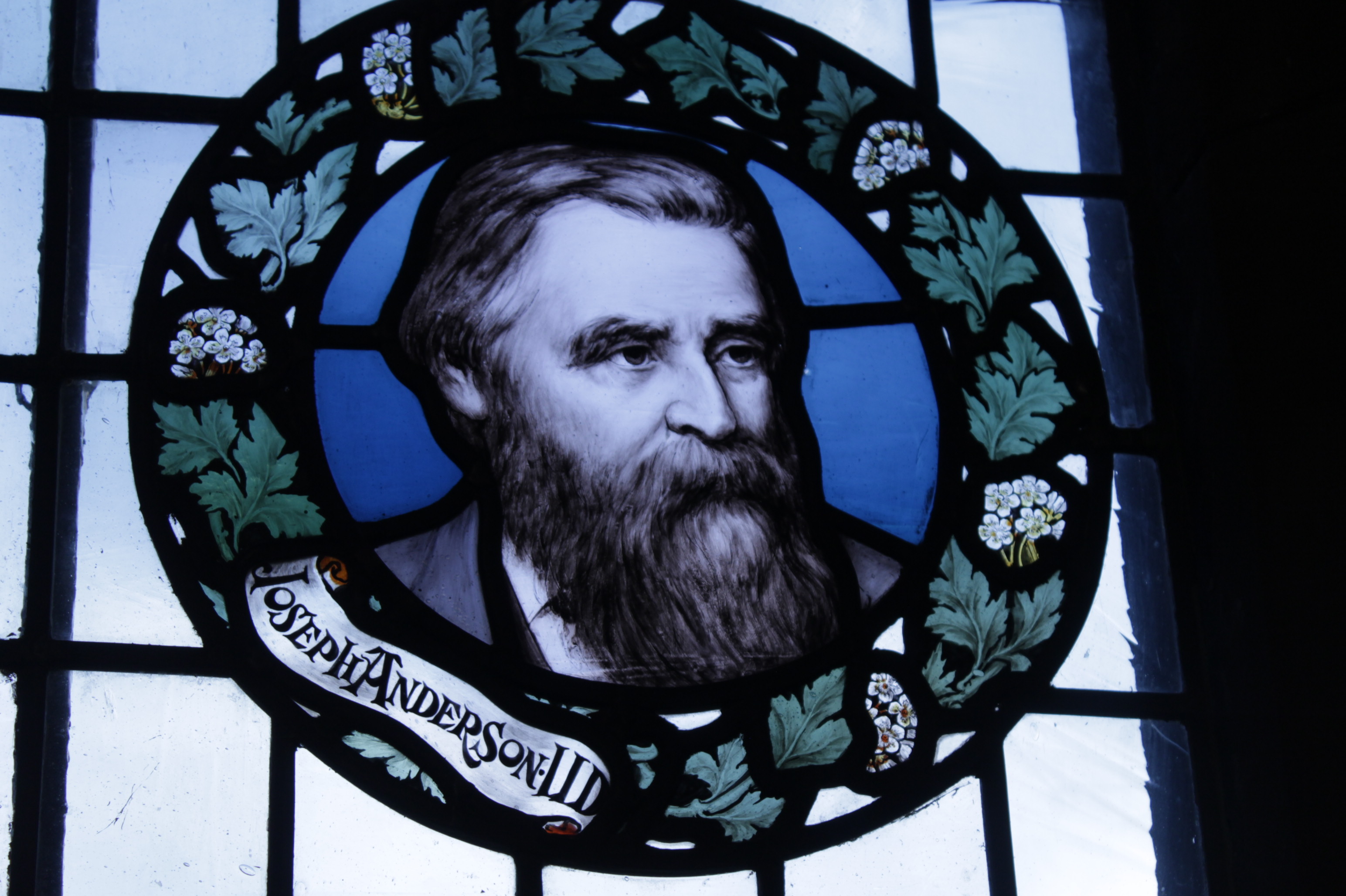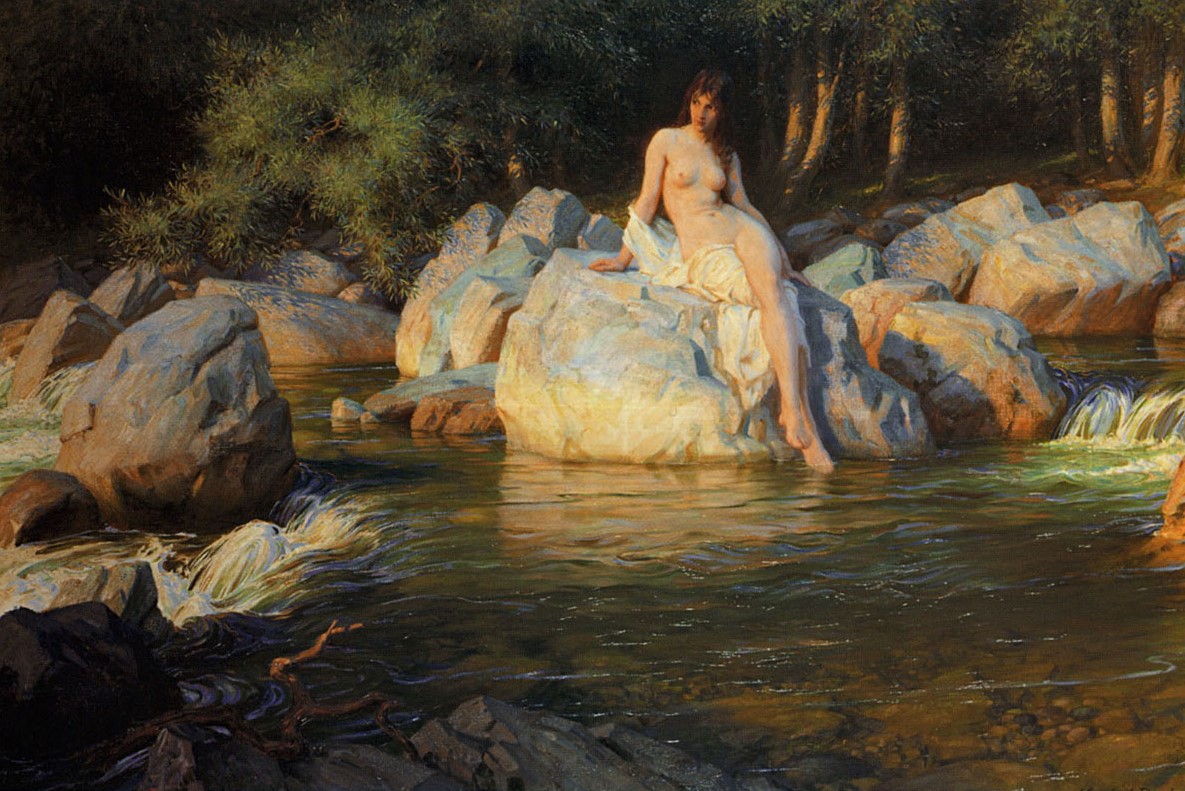|
St Vigeans
St Vigeans is a small village and parish in Angus, Scotland, immediately to the north of Arbroath. Originally rural, it is now more or less a suburb of the town of Arbroath. History St Vigeans is derived from ''Vigeanus'', a Latinised form of the Old Irish name Féichín. Saint Feichin flourished in the 7th century. There is no record of his having visited what is now Scotland, but followers of his cult may have founded a monastery among the Picts at St Vigeans as early as the 8th century. This is shown by the unusual dedication, and especially by the collection of more than thirty elaborately carved stones preserved in the St Vigeans Sculptured Stones Museum (converted from an old cottage) in the village ( Historic Scotland; key from Arbroath Abbey visitor centre). The collection includes cross-slabs, some with Pictish symbols, cross fragments, recumbents, and architectural fragments. It is one of the largest and finest in Scotland of its period, and includes stonework ... [...More Info...] [...Related Items...] OR: [Wikipedia] [Google] [Baidu] |
St Vigeans Sculptured Stones Museum
St Vigeans Sculptured Stones Museum, located in the Angus, Scotland, Angus village of St Vigeans, houses an outstanding collection of Pictish Pictish stones, carved stones. St Vigeans, close to Arbroath, was the centre of a royal estate in the Early Middle Ages, and was of religious importance as a monastery founded in the 8th century. The present-day St Vigeans Church was built in the 12th century, on a mound. The museum displays 38 carved stones which formerly stood upon the old church mound. Among the stones on display is the 9th-century Drosten Stone, a flat rectangular slab with a cross carved on one side and Pictish symbols on the other, and also bearing a Pictish language, Pictish inscription in Latin script. The museum is managed by Historic Scotland and is housed in two adjoining sandstone cottages close to the church. The 19th-century cottages are a listed building#Scotland, category B listed building. References External links * Historic Environment ScotlandVisitor ... [...More Info...] [...Related Items...] OR: [Wikipedia] [Google] [Baidu] |
Angus, Scotland
Angus (; ) is one of the 32 Local government in Scotland, local government council areas of Scotland, and a Lieutenancy areas of Scotland, lieutenancy area. The council area borders Aberdeenshire, Dundee City (council area), Dundee City and Perth and Kinross. Main industries include agriculture and fishing. Global pharmaceuticals company GlaxoSmithKline, GSK has a significant presence in Montrose, Angus, Montrose in the east of the county. Angus was historically a Provinces of Scotland, province, and later a sheriffdom and Shires of Scotland, county (called Forfarshire or the County of Forfar until 1928), bordering Kincardineshire to the north-east, Aberdeenshire (historic), Aberdeenshire to the north and Perthshire to the west; southwards it faced Fife across the Firth of Tay. The county included Dundee until 1894, when it was made a county of city, county of a city. The pre-1894 boundaries of Angus continue to be used as a registration county. Between 1975 and 1996 Angus was a ... [...More Info...] [...Related Items...] OR: [Wikipedia] [Google] [Baidu] |
Drosten Stone
The Drosten Stone is a carved Pictish stone of the 9th century at St Vigeans, near Arbroath, Scotland. In academic contexts it is sometimes called ''St Vigeans 1''. Inscription The Drosten Stone is a Class 2 cross-slab: a flat rectangular stone with a cross carved on one side and symbols on the other. The stone is unusual in having a non-ogham inscription. The inscription is read as:DROSTEN:IPEUORET TFORCUS Thomas Owen Clancy has interpreted the text as Goidelic, giving ''Drosten, i ré Uoret ett Forcus'' (Drosten, in the time of Uoret, and Forcus). Clancy notes three possibilities for the origin of the stone. One is as a monument to a noble or ecclesiastic called Drosten, a common Pictish name related to Tristan, who died in the reign of Uoret and Fergus. The second possibility is a dedication to the popular Pictish Saint Drostan, or perhaps to Saints Drostan and Fergus. The final possibility noted by Clancy is that Drosten and Fergus had the stone made. Clancy believes the ... [...More Info...] [...Related Items...] OR: [Wikipedia] [Google] [Baidu] |
David Chapel
David Chapel (23 June 1882 — 4 May 1912) was a Scottish first-class cricketer and advocate. The son of the solicitor David Chapel, he was born in March 1930 at St Vigeans, Angus. He was educated at Arbroath High School, before matriculating to the University of Edinburgh. From there was admitted to the Faculty of Advocates in March 1905. A club cricketer for Grange Cricket Club, Chapel made his debut for Scotland against Ireland at Perth in 1909. He made three further first-class appearances for Scotland, playing against Ireland in 1910 and 1911, in addition to the touring Indians in 1911. As a left-arm medium-fast bowler, he took 18 wickets at an average of 18.05; he took a five wicket haul on two occasions, with best figures of 5 for 34 against the Indians. As a batsman, he scored 68 runs at a batting average of 13.60, with a highest score of 36. In May 1912, Chapel became afflicted with appendicitis, for which he underwent an operation at Arbroath on Saturday, 4 May. How ... [...More Info...] [...Related Items...] OR: [Wikipedia] [Google] [Baidu] |
Isabella Carrie
Isabella Scrimgeour Carrie (3 May 1878 – 29 November 1981) was a Scottish suffragette and schoolteacher. She became a suffragette after bouncers threw her out of a meeting where Winston Churchill was speaking. She was said to have remarked, "I did not come to the meeting as a suffragette, but I am now". Life Carrie was born in Arbroath in 1878 to Richard and Ann Carrie. She attended school locally and at the age of fourteen she became a pupil-teacher. This meant that she got some training as she taught at a school for four years. She moved to Edinburgh where she attended the Church of Scotland Training College. She then taught in Fife and Arbroath but her health declined. She was teaching in Dundee in 1908 when the suffragettes were beginning to make headlines.Hamilton, S. (2004-09-23). Carrie, Isabella Scrimgeour (1878–1981), suffragette and schoolteacher. Oxford Dictionary of National Biography. Retrieved 29 November 2017, from http://www.oxforddnb.com/view/10.1093/ref: ... [...More Info...] [...Related Items...] OR: [Wikipedia] [Google] [Baidu] |
Joseph Anderson (antiquarian)
Joseph Anderson LLD HRSA (1832–1916) was a Scottish antiquarian who served as keeper of the National Museum of Antiquities of Scotland from 1869 to 1913. Life Anderson was born in Angus, the son of an agricultural labourer, grew up in St Vigeans and attended Arbroath Education Institution. He taught at the English School in Constantinople from 1856 to 1859. In 1860, after moving back to Scotland, he became editor of the ''John O'Groat'' journal. At this time he started to excavate in Caithness, in partnership with Robert Shearer. From 1869 to 1913, 44 years, he was the keeper of the National Museum of Antiquities of Scotland. He was also editor of the ''Proceedings of the Society of Antiquaries of Scotland'' from 1869 to his death in 1916. V. Gordon Childe wrote that by 1886 Anderson "had sketched the essential outlines of Scottish prehistory in a comprehensive and scientific survey such as then existed in no other country". As keeper of the National Museum, he ov ... [...More Info...] [...Related Items...] OR: [Wikipedia] [Google] [Baidu] |
Bridge At St
A bridge is a structure built to span a physical obstacle (such as a body of water, valley, road, or railway) without blocking the path underneath. It is constructed for the purpose of providing passage over the obstacle, which is usually something that is otherwise difficult or impossible to cross. There are many different designs of bridges, each serving a particular purpose and applicable to different situations. Designs of bridges vary depending on factors such as the function of the bridge, the nature of the terrain where the bridge is constructed and anchored, the material used to make it, and the funds available to build it. The earliest bridges were likely made with fallen trees and stepping stones. The Neolithic people built boardwalk bridges across marshland. The Arkadiko Bridge, dating from the 13th century BC, in the Peloponnese is one of the oldest arch bridges in existence and use. Etymology The ''Oxford English Dictionary'' traces the origin of the word ''br ... [...More Info...] [...Related Items...] OR: [Wikipedia] [Google] [Baidu] |
Kelpie
A kelpie, or water kelpie (Scottish Gaelic: '' each-uisge''), is a mythical shape-shifting spirit inhabiting lochs in Scottish folklore. Legends of these shape-shifting water-horses, under various names, spread across the British Isles, appearing in the Northern Isles, Irish, Manx, Northern English, and Welsh folklore. It is usually described as a grey or white horse-like creature, able to adopt human form. Some accounts state that the kelpie retains its hooves when appearing as a human, leading to its association with the Christian idea of Satan as alluded to by Robert Burns in his 1786 poem " Address to the Devil". Almost every sizeable body of water in Scotland has an associated kelpie story, but the most extensively reported is that of Loch Ness. The kelpie has counterparts across the world, such as the Germanic nixie, the wihwin of Central America and the Australian bunyip. The origins of narratives about the creature are unclear, but the practical purposes of kee ... [...More Info...] [...Related Items...] OR: [Wikipedia] [Google] [Baidu] |
Cap-house
A cap-house (sometimes written cap house or caphouse) is a small watch room, built at the top of a spiral staircase, often giving access to a parapet on the roof of a tower house or castle. They provided protection from the elements by enclosing the top of the stairway, and sometimes incorporated windows or gun loops. They were built in various forms, including square turrets, simple boxes, or small houses with gabled roofs, which were sometimes large enough to provide accommodation for a look-out. Cap-houses were an authentic feature of the design of medieval and early-modern tower houses in Scotland, and were a frequent element used in the later Scottish Baronial architecture. Gallery Medieval and early-modern cap-houses File:Knock_Castle_4.jpg, Knock Castle, Aberdeenshire, showing the cap-house above the entrance File:Plunton_Castle_(geograph_4888980).jpg, Plunton Castle, with a gabled cap-house at the top of the stair wing (shown on the right) File:Rusco_Castle_-_geograp ... [...More Info...] [...Related Items...] OR: [Wikipedia] [Google] [Baidu] |
Victorian Restoration
The Victorian restoration was the widespread and extensive wikt:refurbish, refurbishment and rebuilding of Church of England church (building), churches and cathedrals that took place in England and Wales during the 19th-century Victorian era, reign of Queen Victoria. It was not the same process as is understood today by the term building restoration. Against a background of poorly maintained church buildings, a reaction against the Puritan ethic manifested in the Gothic Revival, and a shortage of churches where they were needed in cities, the Cambridge Camden Society and the Oxford Movement advocated a return to a more medieval attitude to churchgoing. The change was embraced by the Church of England which saw it as a means of reversing the decline in church attendance. The principle was to "restore" a church to how it might have looked during the Decorated style of architecture which existed between 1260 and 1360, and many famous architects such as George Gilbert Scott and Ewan ... [...More Info...] [...Related Items...] OR: [Wikipedia] [Google] [Baidu] |
Scottish Reformation
The Scottish Reformation was the process whereby Kingdom of Scotland, Scotland broke away from the Catholic Church, and established the Protestant Church of Scotland. It forms part of the wider European 16th-century Protestant Reformation. From the first half of the 16th century, Scottish scholars and religious leaders were influenced by the teachings of the Protestant reformer, Martin Luther. In 1560, a group of Scottish nobles known as the Lords of the Congregation gained control of government. Under their guidance, the Scottish Reformation Parliament passed legislation that Scots Confession, established a Protestant creed, and Papal Jurisdiction Act 1560, rejected Papal supremacy, although these were only formally ratified by James VI in 1567. Directed by John Knox, the new Church of Scotland adopted a Presbyterian polity, Presbyterian structure and largely Calvinist doctrine. The Reformation resulted in major changes in Scottish education, Scottish Renaissance painted c ... [...More Info...] [...Related Items...] OR: [Wikipedia] [Google] [Baidu] |
St Vigeans Church
St Vigeans Church is a Church of Scotland parish church, serving the parish of the ancient village of St Vigeans on the outskirts of Arbroath, Angus, Scotland. The church was rebuilt in the 12th century but not consecrated until 1242 by David de Bernham, Bishop of St Andrews. The church underwent some alteration in the 15th century, but suffered very little change following the Scottish Reformation of 1560. A major restoration was carried out in 1871 by the Scottish Victorian architect Robert Rowand Anderson. See also *List of Church of Scotland parishes The Church of Scotland, the national church of Scotland, divides the country into Presbyteries, which in turn are subdivided into Parishes, each served by a parish church, usually with its own minister. Unions and readjustments may however res ... * List of Category A listed buildings in Angus References External linksSt Vigeans Church Church of Scotland churches in Scotland Churches in Angus, Scotland Category A lis ... [...More Info...] [...Related Items...] OR: [Wikipedia] [Google] [Baidu] |






